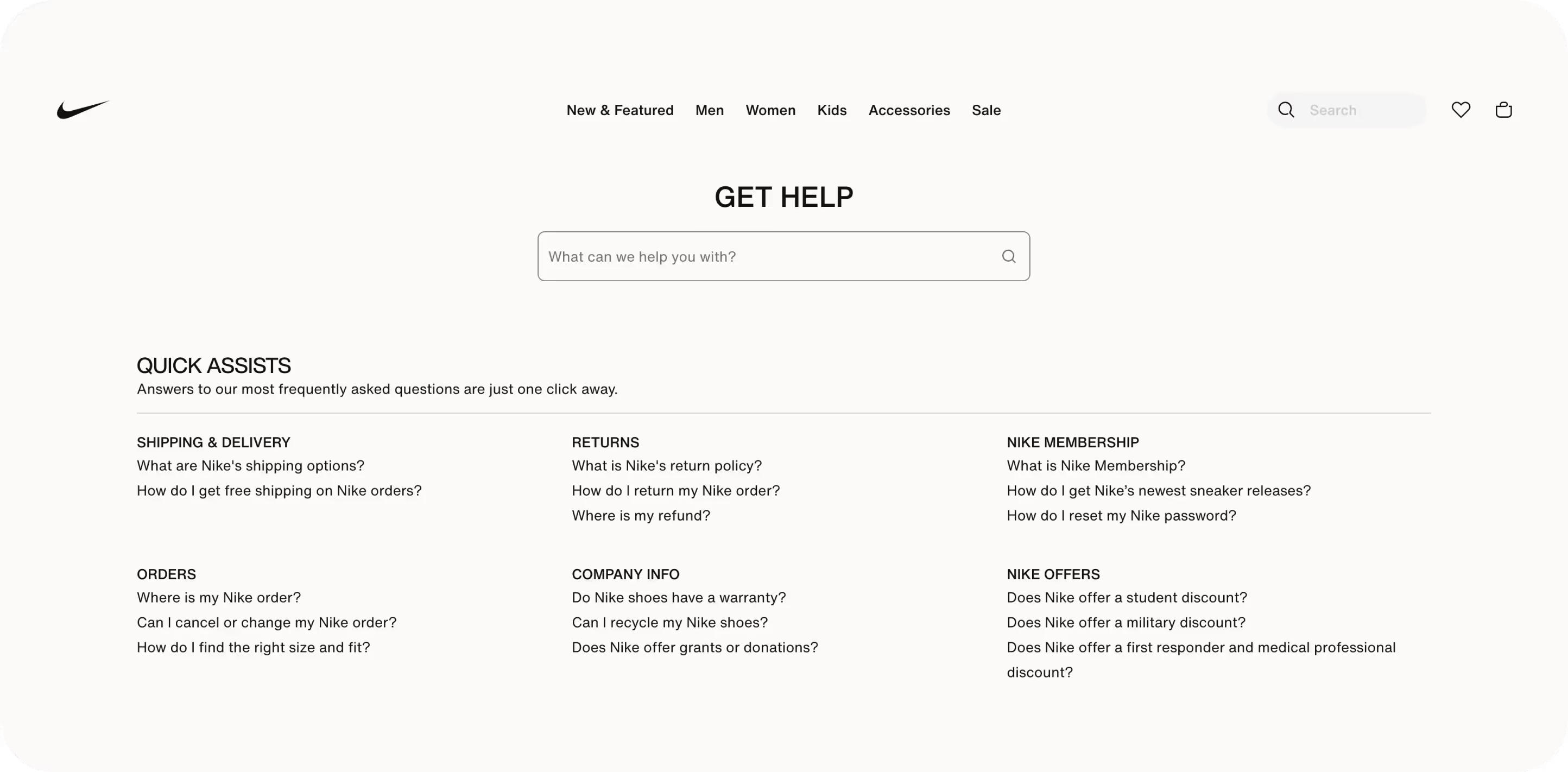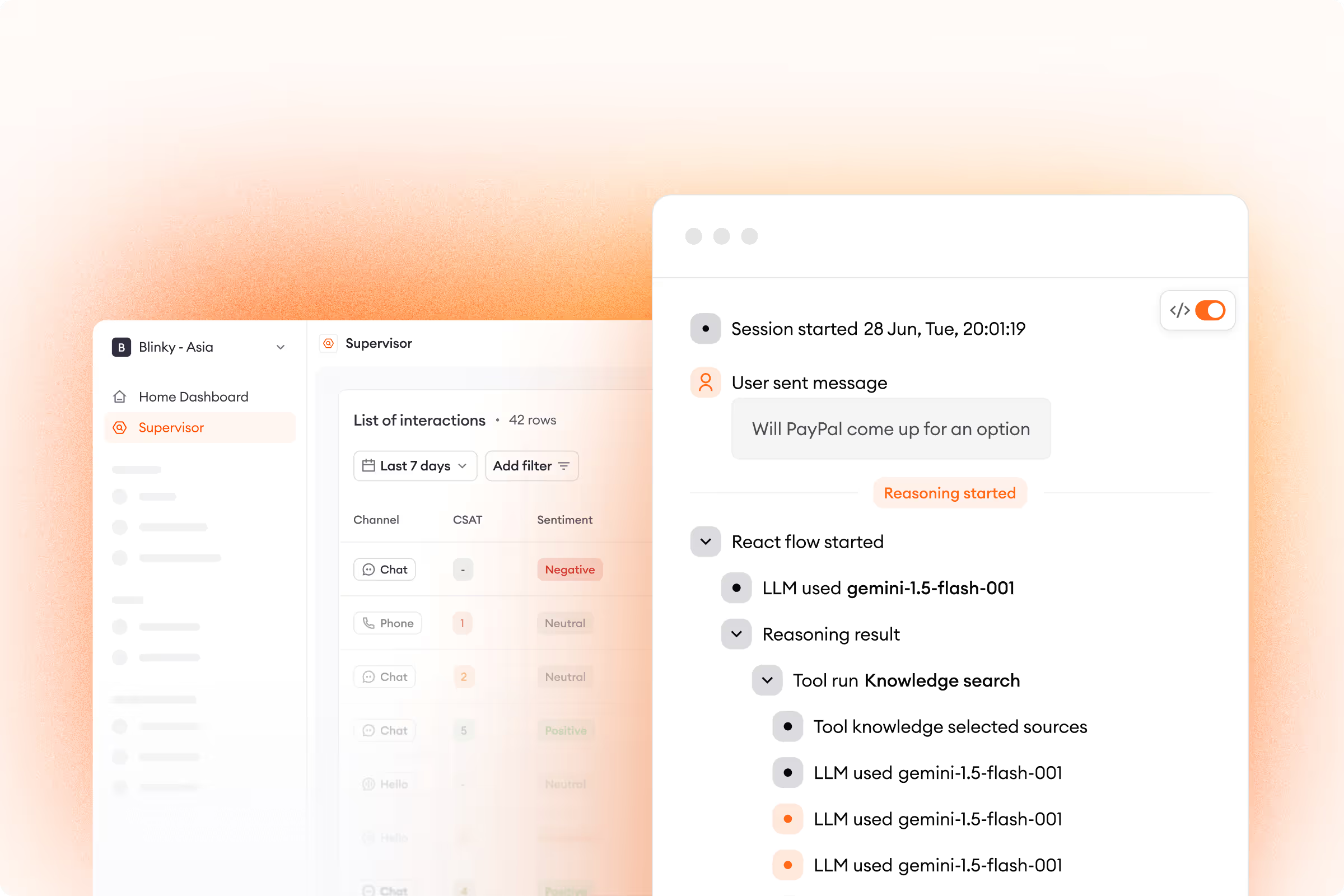Imagine a chaotic call center where agents face a constant barrage of support tickets — and customers pay the price with lengthy wait times.
No one’s happy. Everyone’s stressed out. And both sides are getting a terrible experience.
Sounds bleak, doesn’t it?
While these disorderly contact centers may have been the norm for decades, there’s a newer, better model redefining what’s possible in customer support today — self-service.
What is the self-service model, and how can it help ecommerce businesses? Read on to learn why adopting a self-service model is vital to offering excellent customer support.
What is the self-service model?
The self-service model describes a kind of customer support that gives shoppers everything they need to resolve issues on their own. Due to the model’s speed and convenience, more shoppers are choosing it as their preferred type of customer support — 81% of shoppers say they want more self-service options.

The problem is that many businesses are dragging their feet — only 15% of customers are satisfied with the self-service support that’s currently available. This gap, however, presents an opportunity for companies willing to embrace self-service. Those adopting the self-service model to meet customers’ needs are poised to satisfy shoppers, while the competition will continue falling short.
Examples of the self-service model in action
A self-service model can be implemented in several ways. Here are some of the most popular:
1. An FAQ page
For most companies, adding an FAQ page to their website is a solid first step in setting up an effective self-service model. FAQ pages are affordable and can be huge time savers. Shoppers get instant answers, while agents aren’t spending as much time responding to tickets that ask for basic info like What is your return policy? and Do your products have a warranty?
Moreover, an FAQ page can be a starting point for more comprehensive knowledge base articles that give in-depth insights into a given topic, allowing customers — even those seeking detailed information — to resolve cases independently.
That said, FAQ pages are inherently limited in the customer experience they provide. Customers still have to sift through your knowledge base to locate the specific answer they want, and no key data can be collected beforehand if they still need to ask an agent for help. Rather than a universal solution, FAQs are a great starting point for more robust solutions that employ conversational AI.

2. An AI-powered chatbot
AI-powered chatbots bring your entire knowledge base right to the customer, showcasing the self-service model’s full potential.
By interacting with shoppers via a chat widget, chatbots ensure customers don’t have to hunt down answers themselves. Users can simply type their questions and receive an instant response without navigating to a specific page.
Remember Microsoft’s Clippy? It’s a bit like that — a personal assistant to help customers better understand and navigate your website.
Chatbots are also more effective than live chat, as buyers don’t need to wait in a queue to receive a reply from a support rep. They’re active 24/7, have multilingual capabilities, and deliver a consistent customer experience each time.
Better still, they’re not just for answering questions. Chatbots can take on tasks as varied as collecting feedback, offering exclusive discounts, and crafting personalized recommendations. And with each interaction, agents see a major drop in their overall ticket load.

3. Email ticket automation
Self-service doesn’t have to be limited to your website. Support channels like email can be automated, allowing customers to handle cases themselves and replace exchanges that typically take days. Since 54% of shoppers still use email for customer support, this is massive.

How does email ticket automation work? Conversational AI picks up on a customer’s intent and sends an automated email reply offering to resolve the issue immediately. Shoppers can then recreate the chatbot experience over email to receive an instant answer.
Thanks to seamless integrations, chatbot technology can be leveraged not only on email, but on support channels as diverse as social media, text, and mobile as well. Many variations of self-service exist, and the more you’re able to automate, the more effective your support team will be.
And since an automated ticket is nearly 4x cheaper than one handled by a human agent — you’ll save more money too.
Benefits of the customer self-service model
1. An improved customer experience
The biggest impact self-service brings any organization is a marked improvement in the customer experience. The worst headaches linked to customer support — long wait times, endless transfers, and incorrect info from human agents — become a thing of the past.
By providing customers with the instant, 24/7 support they’re craving, you’re not just satisfying them — you’re empowering them. Employing AI to deliver self-service solutions can increase customer satisfaction and, in turn, customer retention.
See how far ecommerce self-service can take you with The Customer Service Automation Handbook for Online Businesses.
2. Unlocked agent efficiency
Customers aren’t the only group benefiting from AI-powered self-service. Free from a ticket backlog of repetitive questions, support agents can be much more productive and focused on cases that require their expertise.
Fewer cases mean customer service teams have a more manageable workload and spend time building customer relationships. The result? More customers walk away happy getting the info they need, and support metrics improve across the board as response times and resolution times plummet.
3. Greater growth potential
Self-service is a powerful asset for helping out a business’ bottom line. However, lower support costs aren’t the only thing we’re talking about.
Yes, self-service channels are more cost-effective than relying solely on a team of human agents. They also makes scaling much more manageable. Rather than paying to hire and train support reps anytime your business grows, you can reliably turn to self-service to handle the bulk of inbound tickets.
But letting customers self-serve goes one step further — it has the power to drive sales. Conversational AI can gauge buyer intent and send personalized messages that increase conversion rate and order values.
Put self-service into action
Customers are clamoring for greater self-service. Zowie is the perfect starting point.
Built for ecommerce, Zowie is an all-in-one customer service automation suite that helps businesses deliver exceptional self-service across all support channels.

.avif)







